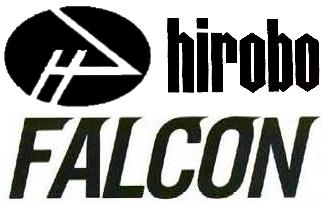
The predecessor to the GMP Competitor, Cobra, and Legend
was the Hirobo Falcon line of R/C Helicopters

The predecessor to the GMP Competitor, Cobra, and Legend
was the Hirobo Falcon line of R/C Helicopters
L-R Hirobo Falcon Mk1, 505, 707, & 555
Hirobo is a Japanese RC model company best known for their line of high-quality radio controlled helicopter models, both nitro-powered and electric. The company was founded October, 1949 as textile machine manufacturer Hiroshima Spinner, Limited. In 1957, the company partnered with Nichibo Company to form Hiroshima Synthetic Fiber Spinners Limited, today known as Unitika Limited. The name change to Hirobo Limited came about in 1970; the electronics division was established in April, 1973. Production of radio controlled models began in July that same year. By October, 1977, the company had completely withdrawn from the textile market.
GMP was for many years the exclusive U.S. distributor for Hirobo helicopters, and many of GMP's own helicopters shared parts and borrowed heavily from Hirobo designs. One of Hirobo's first model helicopters, the original version of the Hirobo Falcon released in 1977 (widely known today as the "Falcon Mk1"), is remembered for its then-revolutionary mechanical layout as being the first "pod and boom" helicopter.
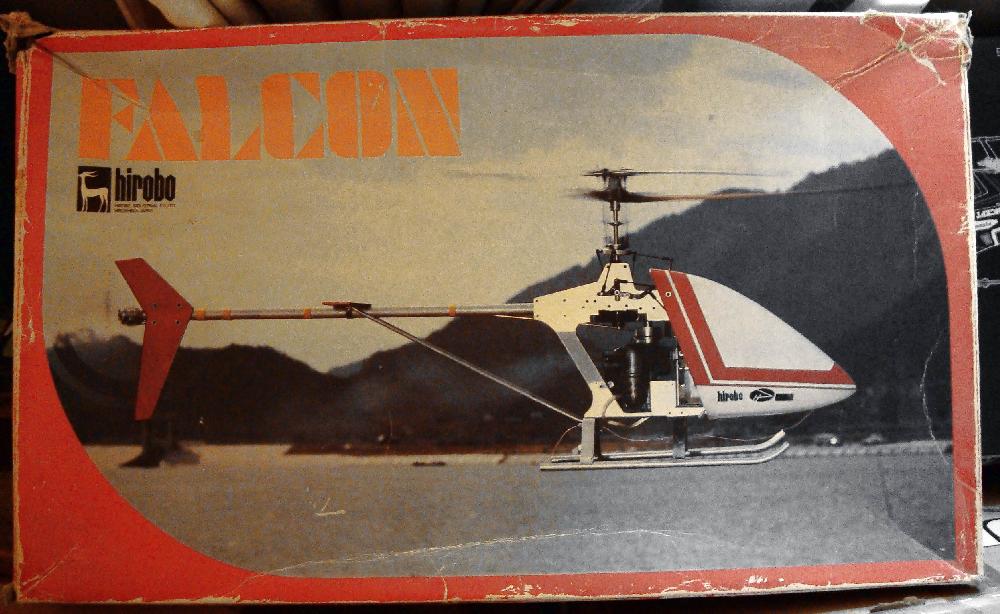
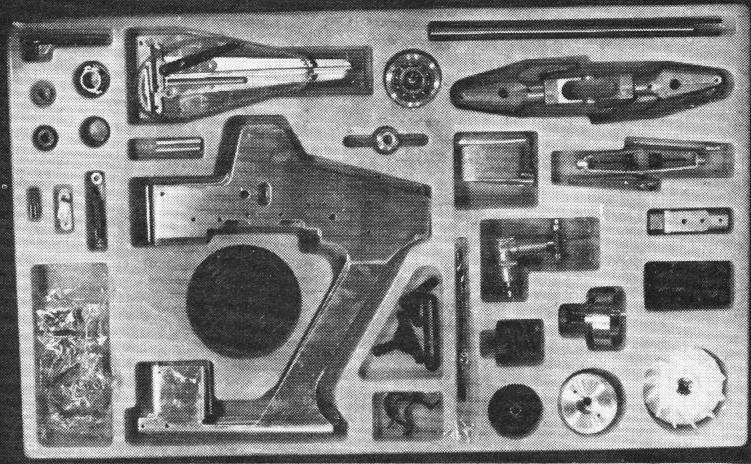
Almost all of today's modern aerobatic R/C helicopters share the same basic "pod and boom" arrangement of major mechanical components as the Hirobo Falcon Mk1.
In a nutshell, the Falcon is the slightly less-beefy, slightly more primitive ancestor of the GMP Competitor / Cobra / Legend. Many of the steps in building the Falcon are are the same as those later GMP models. For example, the main frame (except for a few evolutionary details), tail rotor gearbox, horizontal stabilizer, servo trays, and many other parts are essentially the same.
The Mk1 had a primitive main rotor head design that, with only slight hardware improvements, ultimately proved to be an evolutionary dead end with the later Falcon 505 three years later. The Mk1's swashplate's anti-rotation link was actually attached to the top of the fiberglass canopy.
Hirobo Falcon Mk1 Rotor Head
The Falcon MkII débuted approximately two years after the original Mk1. It was marketed as a more advanced stunt helicopter, as compared to the slightly more stable, beginner's Mk1 best suited to basic maneuvers and hovering around. With a slightly revised "collective de-coupler" rotor head, and most significantly in terms of visual differences, a new canopy which would also be featured in the later Falcon 505 and 555.
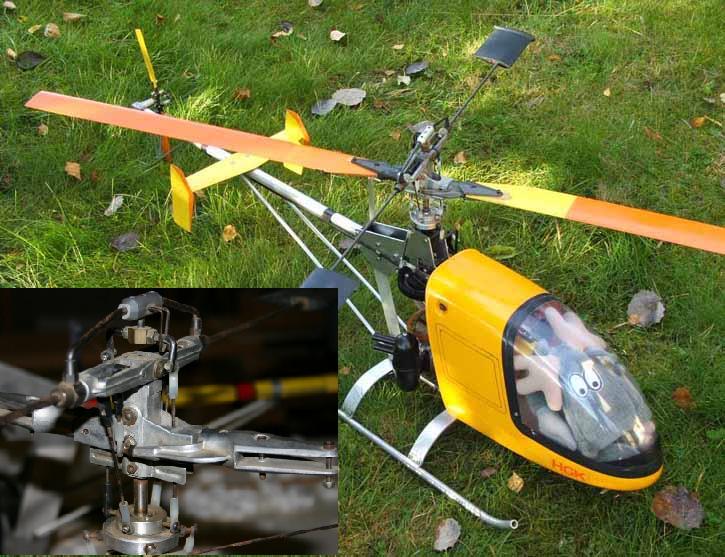
Hirobo Falcon Mk2
While the early Falcons suffered from a number of early issues such as chronically broken motor mounts, erratic flight behavior, and hardware issues, the next generation represented an incremental improvement over the Mk1.
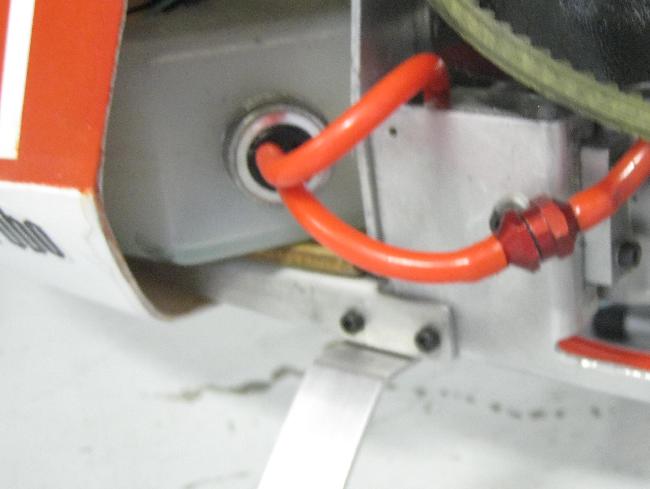
Early Falcon motor mounts were simply 90-degree bends in the aluminum frame.
The 505 had a yet-again revised version of the original rotor head but was finished in a "gun-metal" color (sometimes tinted slightly green). It also had a red anodized frame, a more solid engine mount, a larger cabin and a different servo layout than the original Falcon.
Hirobo Falcon 505
The next Falcon model, also released in 1980, was the Falcon 707 (referred to at the time as the "Toaster" due to its appearance) featured a new design rotor head that was later adopted by GMP as their "custom" rotor head, and was also offered in all of the company's scale helicopters at the time (including the Gazelle, Llama, Huey, and Jet Ranger). This "custom" rotor head was later offered by GMP in their Cobra and Legend helicopters.
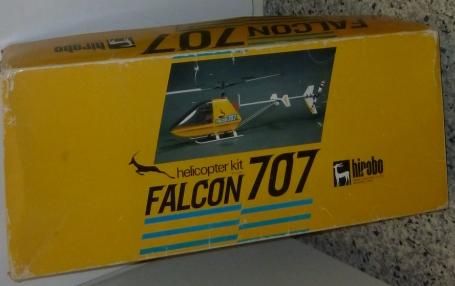
Hirobo Falcon 707
The Hirobo Falcon 555 came next. Essentially a Falcon 707 but with the more standard looking 505 canopy, either a red or black frame, and a unique 60 degree split horizontal stabilizer.
Hirobo Falcon 555
The final Hirobo Falcon models were more sophisticated again, with a washout unit fitted, a new type of Bell-Hiller rotor head, a larger 10mm diameter main rotor shaft (now the defacto industry standard for .50 sized helis) and other incremental improvements, such as a metal clutch to replace the resin clutch in the earlier Falcons that would tend to burn up. The 808 featured a new machined aluminum rotor head center yoke, with no "coning angle" (i.e. the blades did not rise upwards from the center yoke). This design was essentially the same as the GMP Competitor "Pro" rotor head, and this model served as the basis of the GMP Competitor which débuted in 1982.
Hirobo Falcon 808EX
![]() VS.
VS.![]()
At first glance, other than the canopy and tail fins, GMP's later Competitor, Cobra, and Legend looked just like the Falcon underneath. Even though the GMP models were initially comprised of perhaps 50% or more Hirobo parts, and were for the first several years advertised as a combined "GMP / Hirobo development", there were a number of major differences between the GMP's first derivate model, the Competitor, and the Falcon 808.
While the Competitor used Hirobo main and tail rotor systems as well as the Hirobo main and tail rotor control systems, GMP made their own clutch, clutch bell, canopies, and servo mounts, and then later also their own aluminum side frames, landing gear, main gears, swash plate, and other small parts. The GMP tail booms were shorter than the Falcon, and the rotor span was shorter. GMP added a starter cone above the clutch assembly, while Hirobo maintained a starter belt system. Both the Falcon and the Competitor flew very well, although somewhat differently. The Competitor's main drive pinion had one tooth more than the Falcon's, increasing the final drive gear ratio, and the main rotor head speed. The Competitor was hotter, the Falcon was slower and smoother. Both are considered excellent machines derived from a common evolution.
Hirobo Falcon Resources
505 Assembly / Instruction Manual
555 Assembly / Instruction Manual
707 Assembly / Instruction Manual
888 Assembly / Instruction Manual
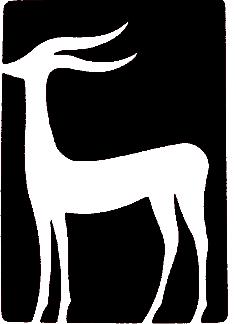
You will need the free Adobe Reader
to view and print all GMP Documents
Connect with GMP on Facebook
